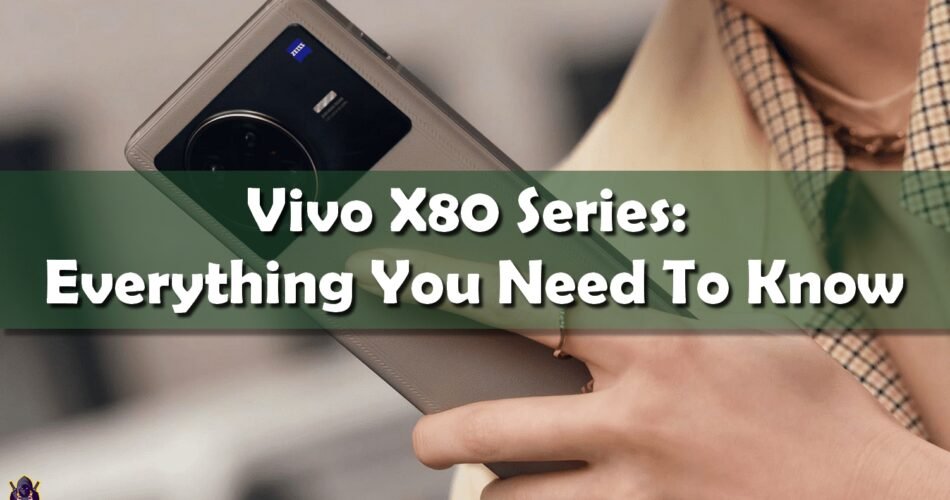Vivo has very big plans with the new Vivo X80 smartphone family. These are smartphones in the higher price range, which will convince even the most demanding users of mobile phone services.
The novelties offer solid specs, and the price won’t be excessive. Furthermore, these are the first smartphones to be equipped with the MediaTek Dimensity 9000 mobile processor (model Vivo X80). Vivo X80 Pro and Vivo X80 Pro Plus will have a Qualcomm Snapdragon 8 Gen 1.
Equally important, Vivo confirmed plans for a global launch of the phones on May 8, when we will discover at least some of the other countries that will receive Vivo’s latest flagships, along with how much they will cost outside of China.

How much does the Vivo X80 cost?
So far, we only have Chinese prices for the X80 and X80 Pro, which we have roughly converted to other world currencies as well:
Vivo X80: from 3,699 JPY (approximately £ 445 / $ 560 / € 525 )
Vivo X80 Pro: from 5,499 JPY (approximately 660 GBP / 840 USD / 780 EUR)
As always, these currency conversions are approximate and any international prices are likely to be slightly higher.
Of course, we still don’t know how much Vivo X80 Pro Plus will cost.
Vivo X80
The Vivo X80 is the cheapest phone in the series, but it’s not negligible.
It is available in three colors: black, orange and green (although we find it rather turquoise). The covers differ not only in color: the black model has a glass back, the orange is in vegan leather and the green has a ceramic construction.
The X80 is powered by MediaTek Dimensity 9000’s flagship chipset, along with 8GB or 12GB of RAM and 128GB, 256GB, or 512GB of storage.
The screen is a 6.78-inch curved FHD + OLED screen with a 120Hz refresh rate and 100% DCI-P3 color gamut coverage, so it should look pretty smooth.

Power comes from a 4500mAh battery with 80W wired fast charging but without support for wireless charging.
As for the camera, there is a triple-lens setting on the back. All three have a Zeiss T * lens coating which reduces glare. The main shooter uses a brand new Sony IMX866 RGBW 1 / 1.49 sensor and a resolution of 50 MP with an f / 1.75 lens with OIS.
To this camera is added a telephoto / portrait camera with 2x zoom at f / 1.98 aperture, which uses a 1/2 and 12 Mp Sony IMX663 sensor, which has gimbal-style stabilization. Finally, there is the 12Mp ultrawide with a Sony IMX663 sensor and an f / 2.0 aperture.
As for the front, you get a selfie camera with holes with a 32 Mp 1 / 2.8 sensor and an f / 2.5 lens.
In China, the phone comes with Android 12 with Vivo’s OriginOS Ocean, although the international edition is more likely to use a FuntouchOS disguise.
VIVO X80 Pro
The X80 Pro is quite similar to the X80, but with a few key improvements.
The design is particularly similar, with the same colors and the same finishing options. In fact, the only real difference is that the camera module is slightly larger to fit the additional lens under the main camera ring.
There is another change in the design, which is not visible: the X80 Pro boasts an IP68 rating, which means it is as safe as phones when it comes to water and dust protection.
Inside, while the X80 Pro can be bought with the Dimensity 9000, you can also buy another version with the Snapdragon 8 Gen 1 inside. Both versions are unlikely to be successful internationally and we would expect this to be a repeat of Snapdragon, which will spread around the world.
The RAM and memory options are similar, with 8GB or 12GB of RAM and 256GB or 512GB of storage.

The screen is the same size as the X80 – 6.78 inches – but is upgraded to LTPO 2.0 AMOLED, which means it can reduce the refresh rate down to 1Hz to save power and has a higher QHD + resolution.
It also contains another update. While the X80 includes an under-screen fingerprint sensor, the X80 Pro switches to an ultrasonic sensor with a significantly wider detection range, making it easier to hit the right spot on the fingerprint enrollment screen.
The battery is also larger to the touch at 4,700mAh, and while wired charging is the same at 80W, you also get 50W wireless charging, with reverse charging also supported.
However, the camera is likely equipped with the biggest updates. The main camera is completely different: it is also 50 MP, but uses a Samsung ISOCELL GNV 1 / 1.3 sensor and a bright f / 1.57 aperture with OIS.
The 2x zoom camera is the same as the X80, but with a slightly wider f / 1.85 aperture. There is also a periscope camera with 5x zoom, with an optically stabilized 8Mp sensor at f / 3.4 aperture.
Finally, even the ultrawide gets a serious upgrade: to the Sony IMX598 sensor with a resolution of 48 MP with an aperture of f / 2.2. The selfie camera is the same, 32 Mp hole at f / 2.5.
Like the X80, the Pro also comes with Android 12 and OriginOS Ocean.
VIVO X80 Pro Plus
The X80 Pro + will likely offer some key upgrades over the regular Pro, although we don’t know what.
While we’ve seen some data leaks for the Pro + ahead of the initial launch event, it turns out that some of it is ultimately for the Pro, so it’s unclear what could still be applied to the upcoming phone.
The camera is likely to get most of the updates, and an old piece of information announced that it will use a 50MP Samsung GN1 sensor with an even wider f / 1.3 aperture. We’ve also heard about the switch to the 44-megapixel selfie camera, which wasn’t visible on any of the current X80 headphones.
There aren’t many other leaks for the Pro + that seem likely after the introduction of the X80 and X80 Pro, so it looks like we’ll have to wait a little longer to learn more about this phone’s updates.

